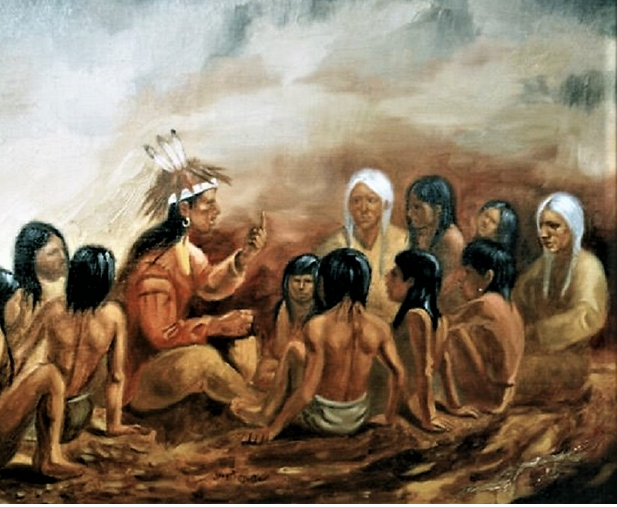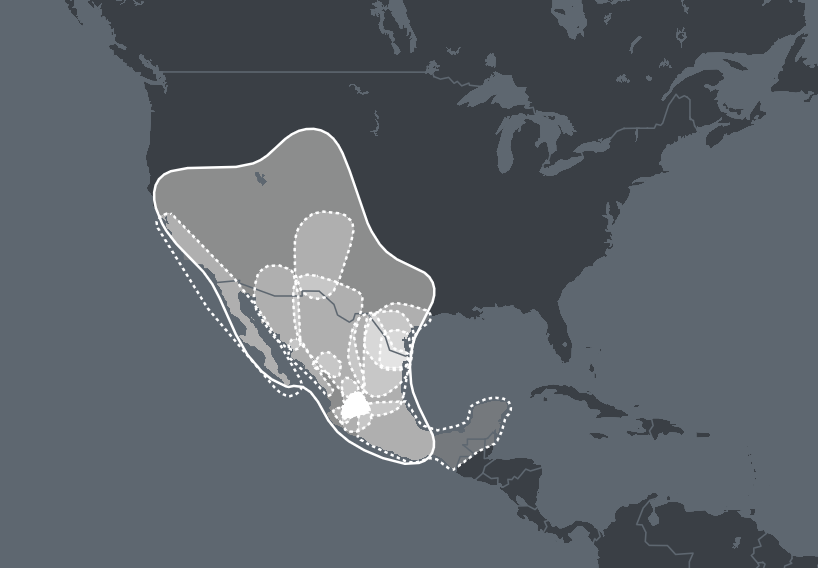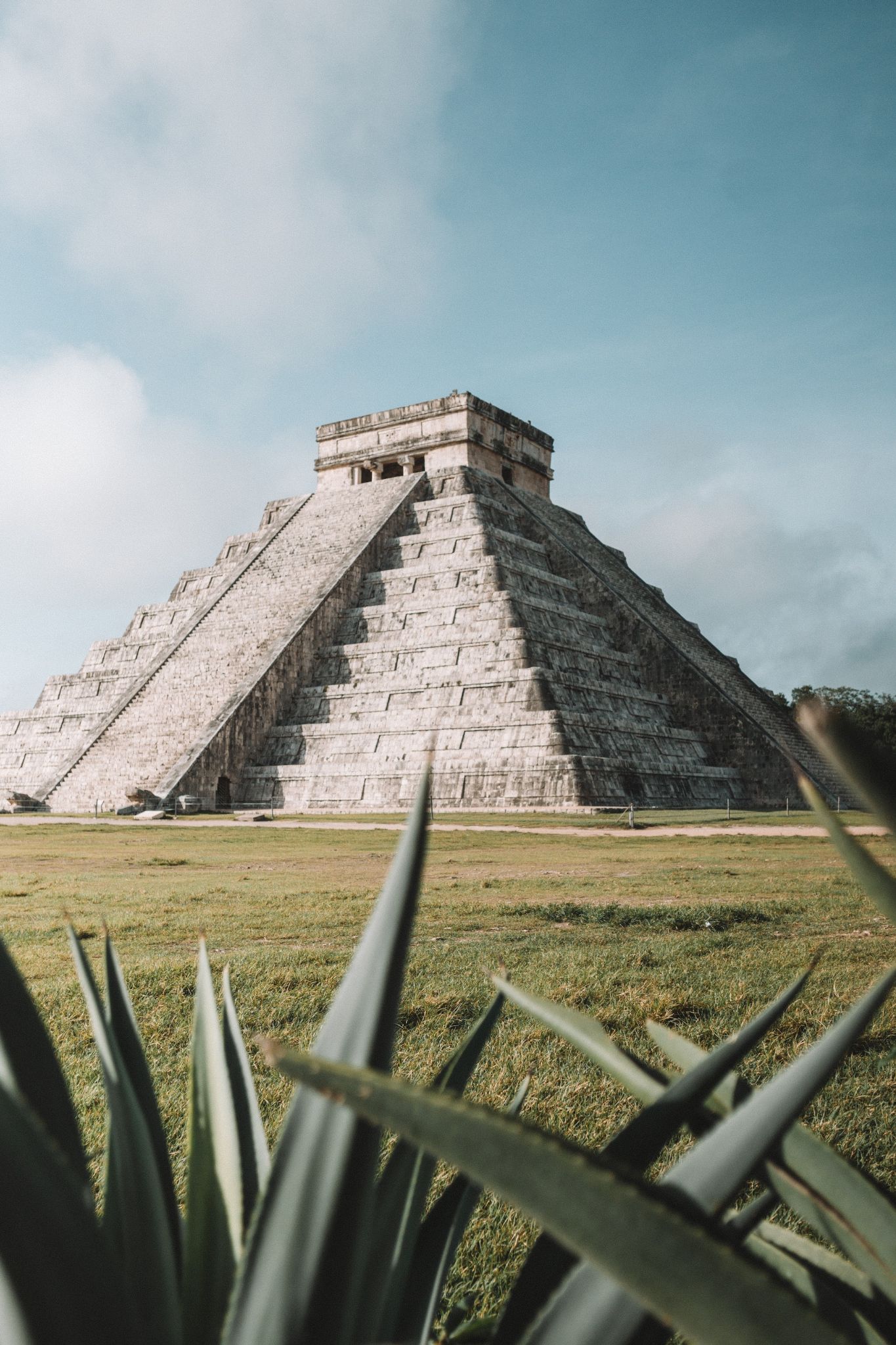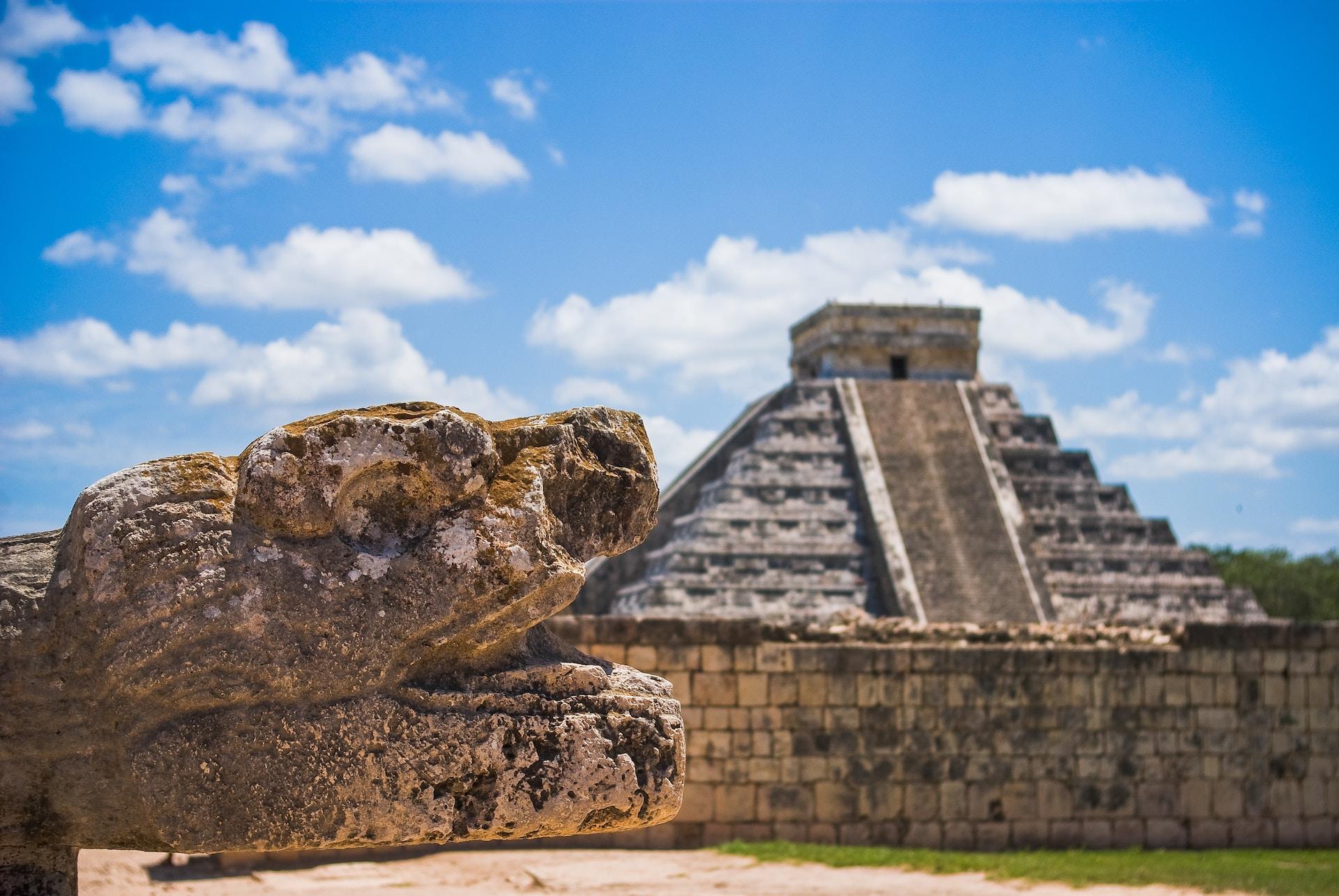What is Indigenous Americas-[Mexico ](/blog/what-do-mexican-ancestry-dna-results-look-like/)DNA Ethnicity on Ancestry?
In this article we will be looking more closely at the Indigenous Americas Mexico DNA region. We will look at where it is and who the indigenous people of that region were. So to find out more about your DNA ancestors of this region read on.
History of Humans in the Americas
The Land Bridge:
Although there is no exact date for when humans first arrived in the Americas there are several prevailing theories. The most common one of course being the land bridge theory. During the last ice age between 19,000 – 8700 BC, sea levels were 100 feet below the modern-day. This was due to vast quantities of water being frozen in glacier form.
During that last ice age, the Bering sea as we know it today was actually a land bridge reaching all the way to Siberia. It is thought that around 14,000 years ago stone age hunters and gatherers followed game across this land bridge and became the first humans to settle within the Americas.

It is also believed that gradually these settlers then headed deeper into the Americas, traveling south in small groups. Due to the ongoing effects of the ice age these groups remained small because conditions were not conducive with large settlements or nomadic tribes.
Today's Indigenous peoples likely descend from a now-vanished ancient group known as the Paleo-Siberians. In DNA testing Indigenous Americas DNA has little in common with modern-day Siberians but in 2019 a 10,000 year old skeleton found in Siberia did show notable similarities to modern-day Native peoples in the Americas.
Traveling by Sea:
There exist several theories whereby early indigenous people of the Americas may have interacted and bred with oceanic explorers prior to the arrival of Columbus. In DNA tests taken of inhabitants of Rapa Nui (Easter Island), these people showed small sections of Native American DNA.
Easter Island is over 2000 miles away from the closest contact with the Americas which would be the coast of Chile. The DNA suggests that these Easter Islanders had a Native American Ancestor from around 1280 – 1495 A.D. It is therefore likely these seafaring Polynesians made the trip to the Americas and some may have stayed.
Recent archaeological evidence also indicates that Vikings were present in the United States around the 11th century A.D. It is reasonable to assume there would be a possibility that some may have settled and assimilated into local tribes.
Indigenous Americas Mexico Region
The Indigenous Americas Mexico region is a truly huge region that represents millions of tested individuals who carry DNA from a common area. As the name suggests the origins likely come from Mexico but at one time the territory of Mexico was far larger than it is today and the DNA shows this clearly.

The spread of this particular DNA region not only covers modern-day Mexico but extends south to Guatemala and Belize. Its extension north however is far more extensive and matches very closely the former borders of the Mexican Territory.
This DNA is found prolifically in the following North American States:
- California
- Arizona
- New Mexico
- Texas
- Southwest Oklahoma
- Southwest Kansas
- Colorado
- Utah
- Nevada
- Southwest South Dakota
- Wyoming
- Southeast Idaho
This DNA region is so extensive it has 13 main sub-regions some of which have multiple sub-regions of their own which would help researchers to locate a more precise point of origin for their indigenous Americas Mexico DNA. These main sub regions are:
- Baja Peninsula & the Southern California Coast (3 sub-regions)
- Central & Southern Mexico (18 sub-regions)
- Central Highlands, Northeast Mexico & Southeast Texas (5 sub-regions)
- Chihuahua, Durango & Zacatecas (7 regions)
- Eastern Jalisco, Aguascalientes & Western Guanajuato (10 regions)
- Michoacan & Southern Jalisco (3 regions)
- New Mexico & Southern Colorado (4 regions)
- Northeastern Mexico (3 regions)
- Northeastern Mexico & South Texas (6 regions)
- Northwestern Durango (4 regions)
- Nuevo Leon Tamaulipas & South Texas (3 regions)
- Sinaloa (3 regions)
- Sonora, Mexico & Southwestern Arizona
- Southern Zacatecas (3 regions)
- Western Jalisco
Indigenous Mexico History
The first evidence of human presence in what we know as Mexico today was chips of stone tools found near an ancient campfire. Carbon dating suggests this fire burned over 10,000 years ago but humans in the region almost definitely predate this.
Findings in South America show habitation as far back as 16,000 years and those peoples would have passed through the Mexico region on their way south from North America.
Evidence suggests that cultivation of maize, tomatoes and beans began in this region which was grown in vast quantities. This abundance allowed the early hunter gatherers of the region to settle down to a more stationary agricultural lifestyle.

Around 5,000 BC villages of collective farmers would have developed. The resulting advances in this region such as religion, vigesimal numeric systems and farming techniques would over time spread further south.
The earliest civilization in the region were the Olmecs who populated the tropical lowlands of the region. They themselves may have derived from the neighboring Mokaya or Mixe-Zoque cultures. They flourished between 1500 – 400 BC and are credited with being the first to practice ritualistic blood-letting.
With the fall of the Olmec came the rise of other civilizations in the region firstly the Zapotec and later the Maya. These newer civilizations took the understanding of written language to the next level leaving behind engraved histories using hieroglyphic script.
The Maya ultimately would become a dominant civilization in the region and far beyond although by around 900 AD they were in serious decline and would eventually become a splintered and scattered people.
In around 1250 AD the Mexica (Mexihcah) arrived in the region settling in the valley of Mexico. They would have some issues with local groups such as the Tepanecs but ultimately would become assimilated into a collection of civilizations that would become known as the Aztecs.
A so-called Aztec triple alliance would rule the region for decades before Spain’s arrival in the early 16th century.
The Spanish
The Spanish had been in the South Americas for a while before they heard of the region we know as Mexico today in 1518. It took less than a year for Spain to begin a plan of conquest of the Aztec empire. They were largely successful with the help of disgruntled city states in the region who were willing to join the battle against the Aztecs.
In 1521 the Spanish captured the Aztec city of Tenochtitlan, founding on its ruins Mexico City. This would be the start of three centuries of colonialism. It was the Spanish who would extend what became known as the Territory of Mexico far into North America taking with them the DNA we find in the Indigenous Americas Mexico region.
How Did You Inherit Indigenous Americas Mexico Region DNA?
It is important to note that due to the small number of original humans that likely crossed the land bridge and thousands of years of isolation, Indigenous DNA is very distinct. Over thousands of years it has changed enough however to pinpoint populations with common DNA such as the Indigenous Americas Mexico region.
As mentioned many individuals from South and Central America may have some Indigenous DNA based on intermarriage between early Spanish settlers and the local native groups in this case the. Olmecs, Maya, Zapotec and Aztec civilizations.

Depending on how high your percentage of Indigenous Americas Mexico DNA is, its origins can vary. If you have a high percentage you may have a recent ancestor who was almost 100% Indigenous. Often if this is the case you would likely have some idea of who this was.
In the case of lower percentages of Native DNA, it might be an indication of a more distant unknown indigenous ancestor. In order to discover this connection, you may have to do some deep research to try and pinpoint at what point that DNA entered your family tree.
Final Thoughts
The Indigenous Americas Mexico region was ruled by some of the biggest and most well studied civilizations of Central America. Groups such as the Olmec, Maya and the Aztecs left behind huge legacies and innovated early agriculture and architecture.
This DNA region is huge and has over 60 subregions which can be used to pinpoint where your indigenous ancestors may have lived. It is a region rich in history and culture and the people descended from the peoples who first settled this area are found around the world and are especially prevalent in the southwest United States.
Link To or Reference This Page
We spent a lot of time downloading, cleaning, merging, and formatting the data that is shown on the site.
If you found the data or information on this page useful in your research, please use the tool below to properly cite or reference Name Census as the source. We appreciate your support!
-
<a href="https://namecensus.com/blog/what-is-indigenous-americas-mexico-dna-ethnicity-on-ancestry/">What is Indigenous Americas-[Mexico ](/blog/what-do-mexican-ancestry-dna-results-look-like/)DNA Ethnicity on Ancestry?</a>
-
"What is Indigenous Americas-[Mexico ](/blog/what-do-mexican-ancestry-dna-results-look-like/)DNA Ethnicity on Ancestry?". NameCensus.com. Accessed on May 2, 2024. https://namecensus.com/blog/what-is-indigenous-americas-mexico-dna-ethnicity-on-ancestry/.
-
"What is Indigenous Americas-[Mexico ](/blog/what-do-mexican-ancestry-dna-results-look-like/)DNA Ethnicity on Ancestry?". NameCensus.com, https://namecensus.com/blog/what-is-indigenous-americas-mexico-dna-ethnicity-on-ancestry/. Accessed 2 May, 2024
-
What is Indigenous Americas-[Mexico ](/blog/what-do-mexican-ancestry-dna-results-look-like/)DNA Ethnicity on Ancestry?. NameCensus.com. Retrieved from https://namecensus.com/blog/what-is-indigenous-americas-mexico-dna-ethnicity-on-ancestry/.
